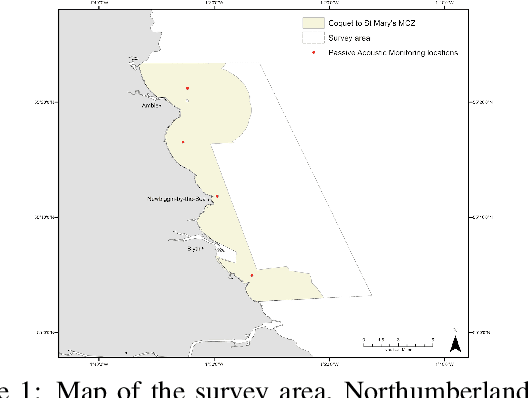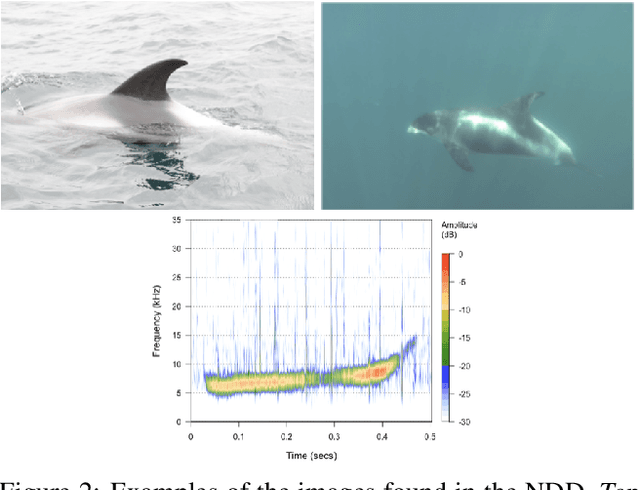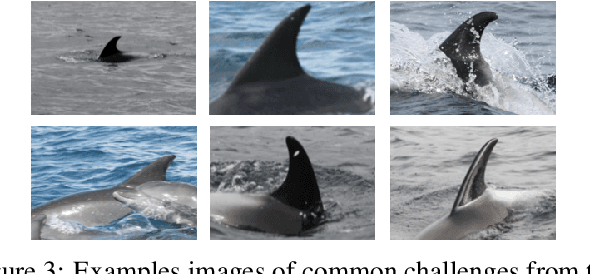The Northumberland Dolphin Dataset: A Multimedia Individual Cetacean Dataset for Fine-Grained Categorisation
Paper and Code
Aug 07, 2019



Methods for cetacean research include photo-identification (photo-id) and passive acoustic monitoring (PAM) which generate thousands of images per expedition that are currently hand categorised by researchers into the individual dolphins sighted. With the vast amount of data obtained it is crucially important to develop a system that is able to categorise this quickly. The Northumberland Dolphin Dataset (NDD) is an on-going novel dataset project made up of above and below water images of, and spectrograms of whistles from, white-beaked dolphins. These are produced by photo-id and PAM data collection methods applied off the coast of Northumberland, UK. This dataset will aid in building cetacean identification models, reducing the number of human-hours required to categorise images. Example use cases and areas identified for speed up are examined.
 Add to Chrome
Add to Chrome Add to Firefox
Add to Firefox Add to Edge
Add to Edge